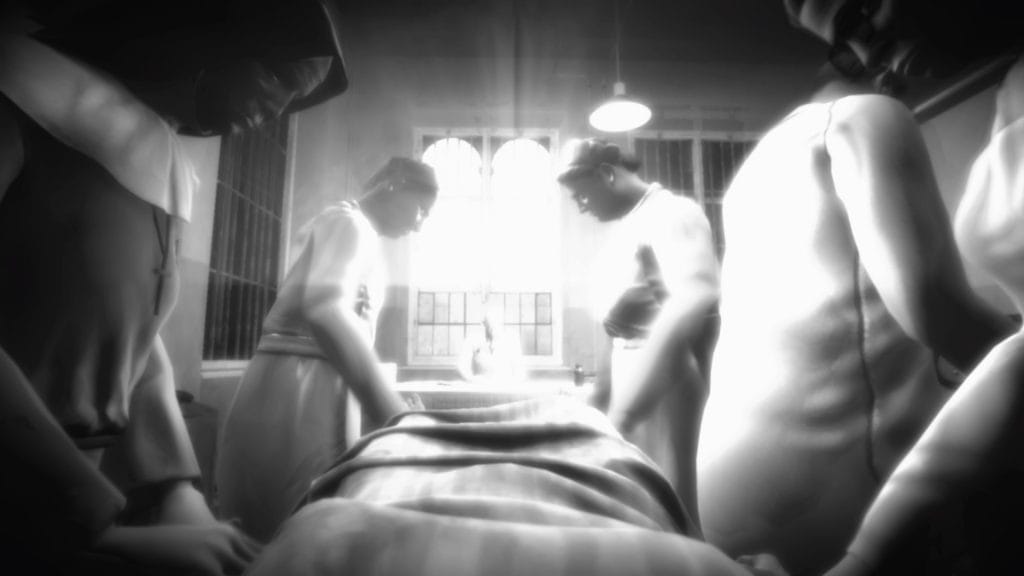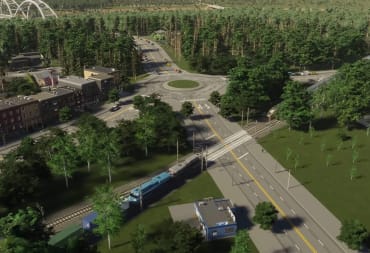The Town of Light is a different kind of horror game. It has no action or monsters or fighting of any kind and it's impossible to die. Instead of all that, it deals with the treatment of people with mental disorders in 1940s Italy. You'll be exploring an out-of-commission asylum in an effort to piece together the story of one of the inmates. Does this give you enough for an interesting game or should the town plunge back into darkness?
The game takes place during two time periods: the late 1930s to early 1940s when Renée spent her time in the asylum, and in 2016 where someone wanders through the asylum putting together what happened there. The problem is that the game jumps around between several time periods with little rhyme or reason. There's a consistent story that can be put together here, but it's rather difficult to do so and I wasn't entirely sure it helped me much by the end. I still have no clue who I was playing in the 2016 segment of the game, what this character's connection to Renée is, or why this character was doing, well... anything. It felt like that could have been cut entirely for a better narrative flow.

While I ended up not caring of the game's attempt, I understand the reasoning is because of the game's tackling of mental health issues as a subject. Renée's recollection of events is hazy and scattershot at best, and the game is trying to be presented in a similar fashion. It's supposed to get you to feel what it's like to spend time a facility as you are constantly lost and fading in and out of sanity. However, other games have managed these plot points in a more interesting and natural way, so it's a shame The Town of Light couldn't do so.
Between the story segments, you'll be wandering around the asylum, retracing Renée's footsteps by going to various rooms. The problem is the game doesn't make it very clear where you're supposed to go without abusing a hint system. You'll get some general clue like "I need to go where Renée first met her friend", but up until that point, I had not even heard of this friend before. It felt like the solution was to just hit the hint button and be told exactly which room I was supposed to be going to, rather than trying to rely on the story to help.

There is also some very simple puzzle solving to be done. The modern day character will try to recreate some of the conditions that Renée lived through. Turning on the water heater, trying to find Renée's mail, or trying to take care of the doll she was obsessed with is the order of the day here. Most of these puzzles require little more than hitting a few items or moving something from point A to point B, offering relatively little challenge to the player. In a game that's mostly focused on narrative, these puzzles feel like they're wasting my time rather than enhancing the game.
The few times that The Town of Light does shine is when I got to see the asylum through Renée's eyes. Her version of the asylum was more twisted, often lacking color and turning in harsh and unnatural ways. All I really had to do here was follow a set path, watching as some new horror descended upon the woman. Sure, it reduced the game to little more than walking in a straight line and watching events, but this was the only time I actually felt connected to the main character and that I could really appreciate the horrors of 1940s mental care that The Town of Light really wants to share. One later scene that showed a lobotomy in detail honestly disturbed me enough that I had to look away from the game at that time.

These few moments are the only time The Town of Light really shined. After that, I would go back to the modern day as some unfamiliar person, relying on a hint button to advance me to some area that I didn't know about, so I could gather another jumble of plot dump often unrelated to anything I had been given at that point. The game attempts to offer up branching paths depending on how you answer certain questions, but this is another element that is more confusing than it really needs to be. The choices you make are measured in four symbols that don't really tell much of anything on what they mean and I was never sure what was and wasn't changing my game.
One area that caught my interest came from the game's sparse uses of pictures. Occasionally, a flashback will show Renée's time in the asylum without giving me control over it. Nurses go from regular people to large faceless creatures that show no empathy or concern for Renée's wellbeing. Unfortunately, the in-game graphics aren't as eye-catching for the right reasons. I often saw an almost nonsensical placement of items, boxes balancing in ways that shouldn't be possible, and giant tree branches floating in mid-air. Things like this were constantly taking me out of the moment.

That's basically my journey through The Town of Light. It's a frustrating game that may have something important to say but gets it completely lost in a bunch of clutter. Its few good moments doesn't do enough for me to suggest purchasing it, and the story of the horrors of mental health institutions are better told in various other books, movies, and games. It's time for this town to go dark.
The Town of Light was reviewed on PlayStation 4 using a copy provided by the developer. The game is also available on PC via Steam and Xbox One.
Review Summary
The Town of Light's unique setting and a handful of standout scenes aren't enough to save the game from boring puzzles, nonsensical plot, and a general lack of direction.
(Review Policy)Pros
- Interesting Flashback Art Style
- Well Done 1940s Scenes
Cons
- Nonsensical Plot is All Over the Place
- Puzzles are Boring Time Wasters
- Heavily Reliance on Hint System
- Cryptic Symbols for Branching Paths
- Graphical Issues
Have a tip, or want to point out something we missed? Leave a Comment or e-mail us at tips@techraptor.net













